HOV (Human Operated Vehicle) Alvin
Alvin is among the world’s longest operating and safest deep ocean submersibles. The titanium sub operated by the Woods Hole Oceanographic Institution has safely completed more than 5,000 deep ocean dives throughout the world’s oceans and is critical to this team’s science mission. A team of dedicated engineers work around the clock to keep Alvin in peak performance before a dive, ensuring the safety of its passengers and the success of the science missions. For this science team, Alvin brings the investigators and their tools directly to the many hydrothermal vent sites allowing firsthand sampling and observation of these very rare and important ecosystems. Alvin also has two robotic arms that can manipulate instruments, obtain samples, and a front science platform can be reconfigured daily to meet the needs, and hold the tools, for each dive’s science mission.
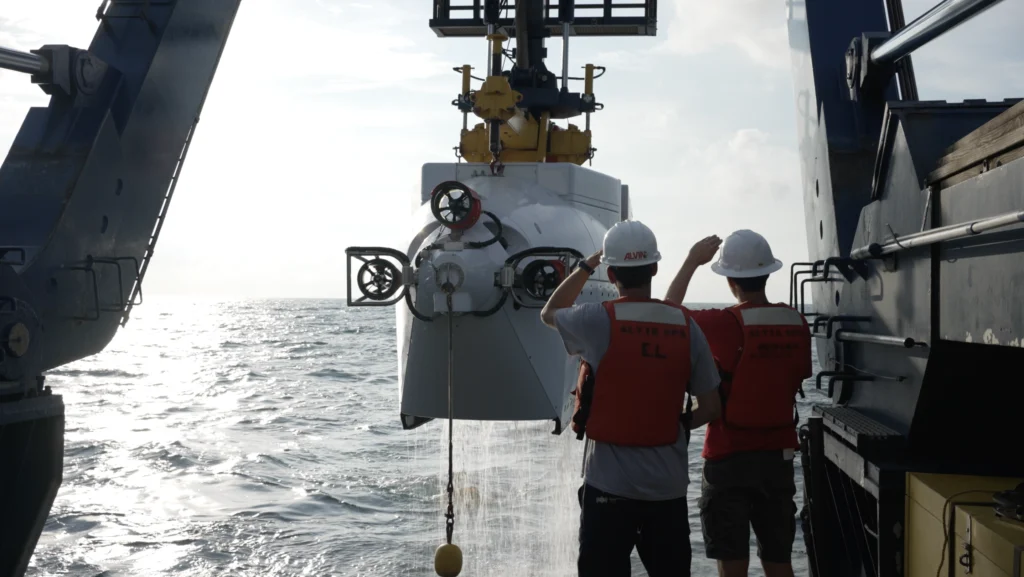
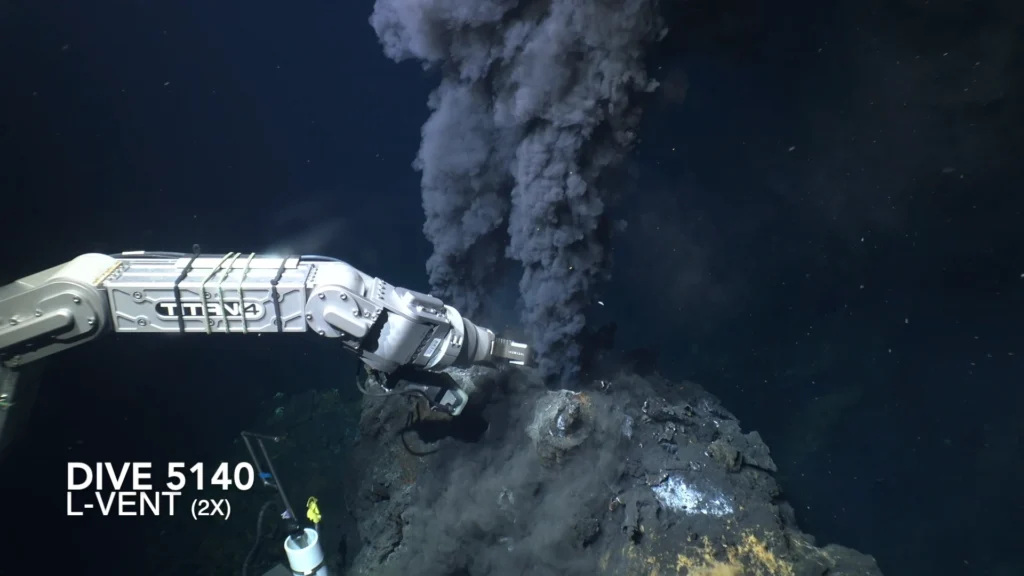
Artificial Substrate “Sandwiches” and Mesh Bag “Purses”
Plastic substrates called “sandwiches” are covered with mesh “purses” during the initial stage of the experiment and placed amidst hydrothermal vent ecosystems. The mesh has extremely small holes allowing the microorganisms to pass through and attach to the substrate while preventing the larger larvae of the vent fauna from getting in. This gives the microbial community on the “sandwiches” time to grow and develop a microbial “biofilm” which will condition the habitat for larval settlement. Once the microbial biofilms have developed, purses are opened to allow larvae to attach themselves to the biofilm covered artificial substrate. The pursed (young biofilms) and unpursed (established biofilms) sandwiches are then compared to help determine which chemical communication occurs between the microbes and the larvae and to determine possible differences between young and established biofilms. This process was repeated throughout most of our dives across a range of environmental conditions to gain as much data as possible. In order to further understand the conditions in which this process takes place a series of measurements of the environment and chemicals found in and around the hydrothermal vent sites are also taken over the course of the dives.


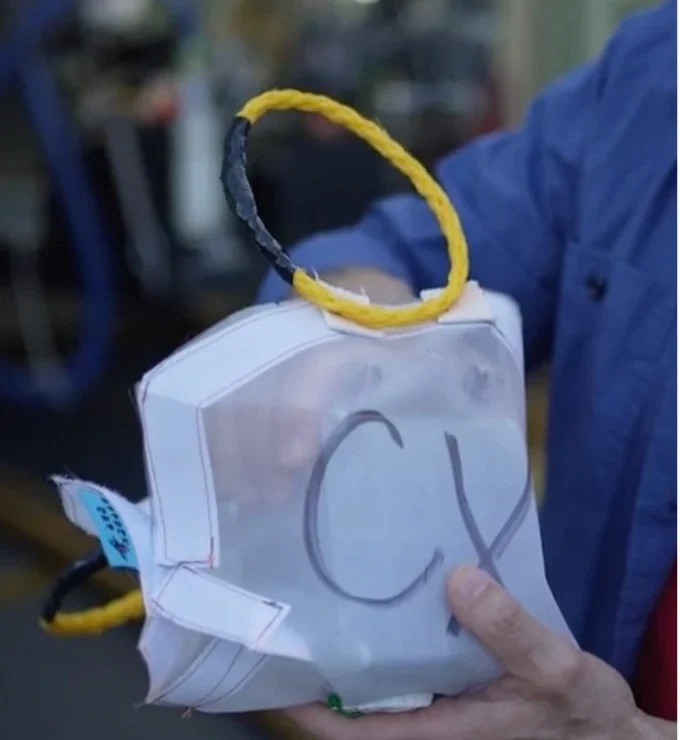
Environmental Sensors
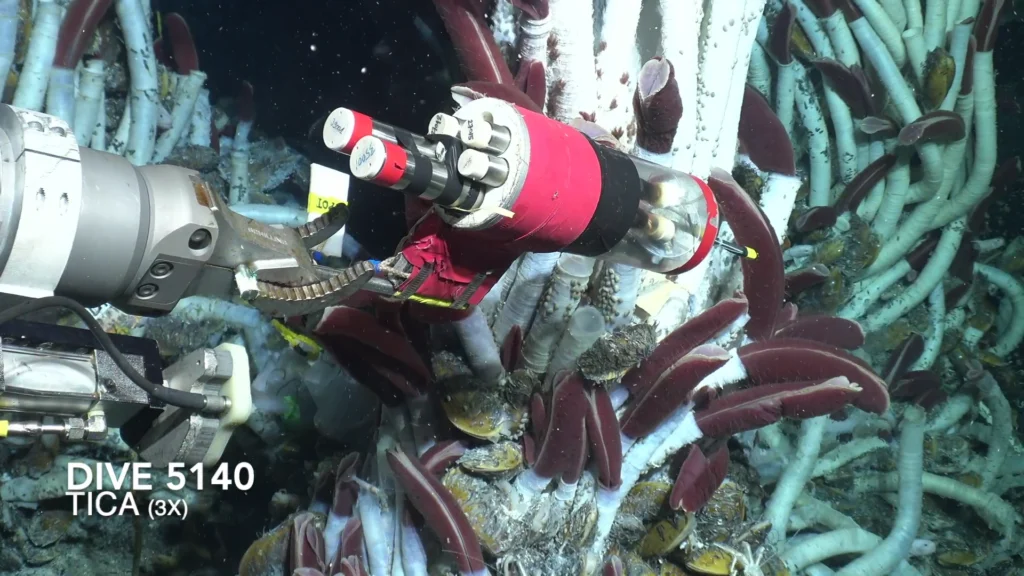
Environmental sensors are devices capable of measuring pH (acidity), temperature, oxygen, sulfide concentrations and more. They are essential tools to understand the conditions in the environment where microbes and larvae thrive. Some of these sensors are designed to be left at the site for days to weeks in order to measure the natural fluctuations (e.g. temperature, sulfide concentration) that occur in the highly dynamic vent habitat and that affect biology. These time-course measurements are critical to understand the environmental constraints for life at deep-sea vents, including the type and availability of resources that organisms need in order to survive, as well as what environmental changes they can withstand.
Majors “Syringe Bottles”
These titanium bottles can be thought of as giant syringes with a spring-loaded plunger. When activated by Alvin’s robotic arm, the spring retracts pulling back the plunger to pull in vent fluids. These bottles allow the science team to collect samples of the vent fluid to identify their chemical composition and the microbes that are present

Elevator

The elevator is a weighted platform dropped on vent sites prior to Alvin’s deployment. This platform can be instrumented with a pump that pulls in water for a 24-hour period to collect plankton and larvae in the deep-sea. It can also be equipped with different tools, including a timelapse camera to document animal movement on the seafloor, especially animals that move slowly or not at all, like snails, who feed on the microbial biofilm. The elevator can also be equipped with Niskin bottles for sampling water. When finished, the Alvin crew releases the weights and the package floats to the surface. When collecting the samples at the ocean’s surface, it is critical for the team to collect them quickly so the organisms captured are not damaged.
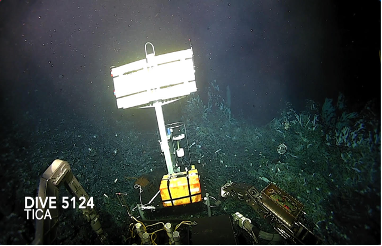
Deep-Sea Plankton Pump
A very high-volume plankton pump is able to pump 40,000 liters or 10,000 gallons in a single 24-hour period. The team needs to pump large volumes of water because the larvae that the team is sampling for are rare in the deep ocean.

Niskin Bottles

The arm of Alvin manually closes a series of cylinder bottles near the vent sites collecting samples of the deep-sea water at predetermined sites.
Growth Media
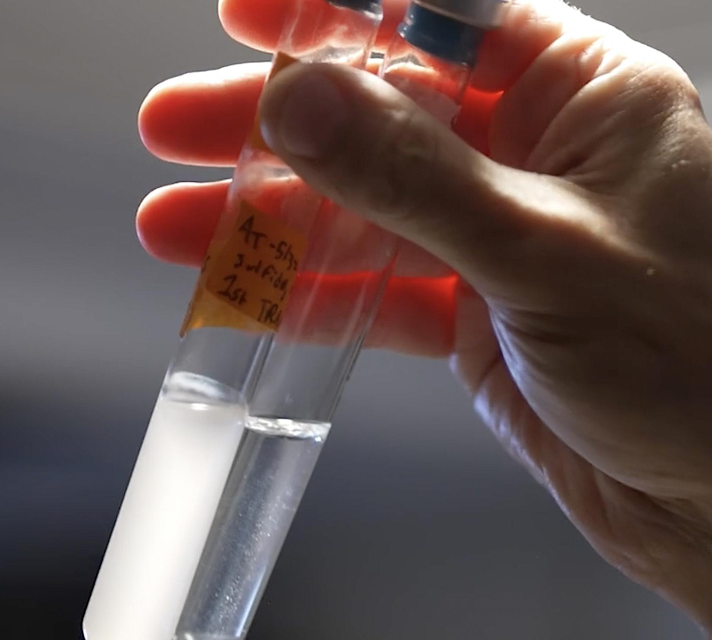
When taking the microbes from these extreme environments back to the lab to study, it’s important to be able to recreate the conditions of their natural environment so that they continue to grow. Various types of growth media were created in order to support these microbes during their stay in the lab. These media tend to consist of anoxic (oxygen free) seawater and a mix of volcanic gasses.
Deep Sea Water Filter
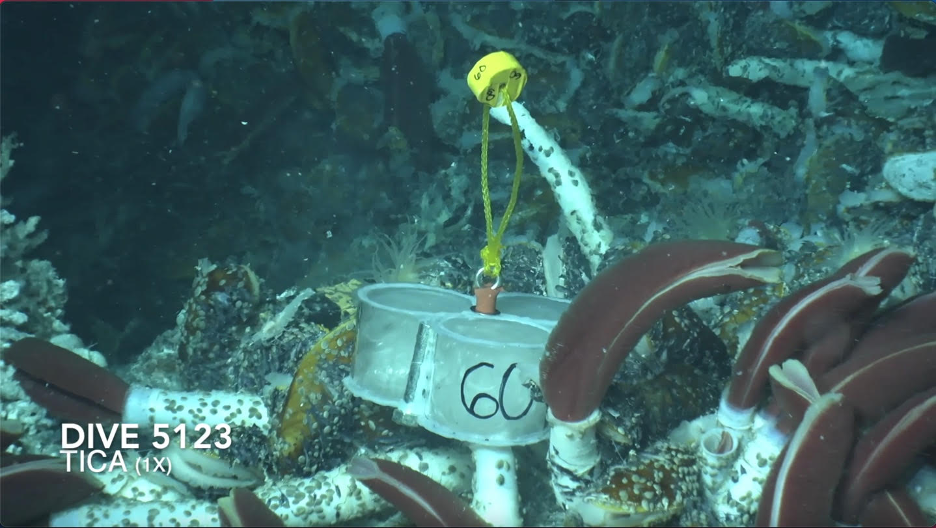
These are containers with mesh layers that each have different pore sizes. This is useful when looking for certain types of microbes because if their approximate size is known it will be known what mesh they will be on since they won’t be able to fit through pores that are smaller than them.
RNAlater

Solution that is used in order to preserve samples so that RNA that is in samples can be analyzed later on. Does this by causing a series of reactions that halts all biological activity while keeping the RNA intact and stable.
Suction Trap “Super Slurp”

The ship and the Alvin engineers have constructed the “Super Slurp” to sampling deep sea organisms and has enough suction power to collect organisms attached to a substrate such as mussels.
Deep Sea Video (photos of Alvin cameras)
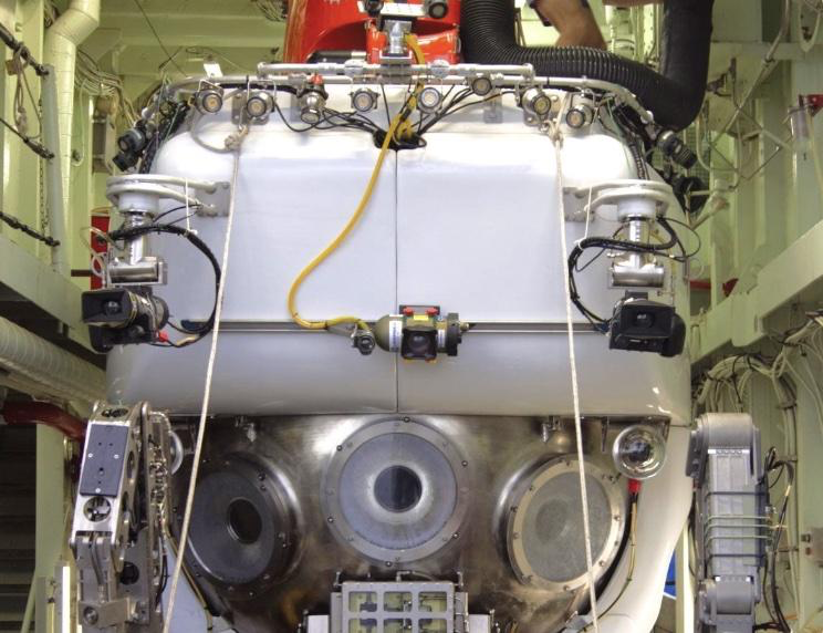
One of the best ways to understand what is going on at these hydrothermal vent communities is to document animal behavior as well as stages of deployed experiments. This is where Alvin’s high-resolution deep-sea video plays an important role in data collection. With each dive recorded with video, it is easy for researchers to review the conditions of the vent communities at any time rather than having to rely on memory of how conditions were at the time of the experiment. It also provides the team with the opportunity to show people like the broader public the important work they do in these rare and remote environments.
